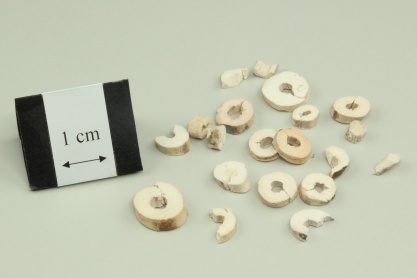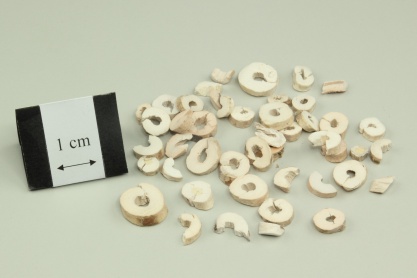牡丹皮
- ENG
- Tree Peony Bark
- LATIN
- Moutan Cortex
| Medicinal Group | Heat-clearing and blood-cooling medicinal |
|---|---|
| Source | Dried root bark of Paeonia suffruticosa Andr. (Fam. Ranunculaceae) |
| Nature and Flavors | pungent, bitter; slightly cold |
| Meridian Affinity | Liver, Heart, Kidney |
| Actions | To cool the blood, activate blood circulation and resolve blood stasis |
Family
Ranunculaceae
Part used
Bark
Indications
Eruptions in epidemic diseases; haematemesis, epistaxis; comsumptive fever occurring at night and subsiding in the morning without sweating; amenorrhea, dysmenorrhea; carbuncles and sores; traumatic injuries
Research Findings
- Guizhi Fuling capsule (consisted of Moutan Cortex) achieved obvious effects in the treatment of uterine fibroids, pelvic inflammatory disease, dysmenorrheal, endometriosis, ovarian cysts, breast hyperplasia and other gynecological diseases.[1]
Cautions
Contraindicated in pregnancy or excessive menstruation, as well as blood insufficiency inducing endogenous cold
Report on adverse effect
Pro-oxidative effects on G6PD-deficient erythrocytes in vitro [2]
Reference
Reference
- Su ZZ, Li N, Cao L, Wang TJ, Zhang CF, Ding G, Wang ZZ, Xiao W. (2015). Main progress on studies of pharmacological activities and clinical applications of Guizhi Fuling capsule. Zhongguo Zhong Yao Za Zhi. , 40(6):989-92.
- Ko CH, Li K, Ng PC, Fung KP, Wong R, Chui KM, Gu G, Yung E, Fok TF (2008) Pro- oxidative effects of Chinese herbal medicine on G6PD- deficient erythrocytes in vitro. TOXICOLOGY IN VITRO, 22, 5, 1222-1227.












